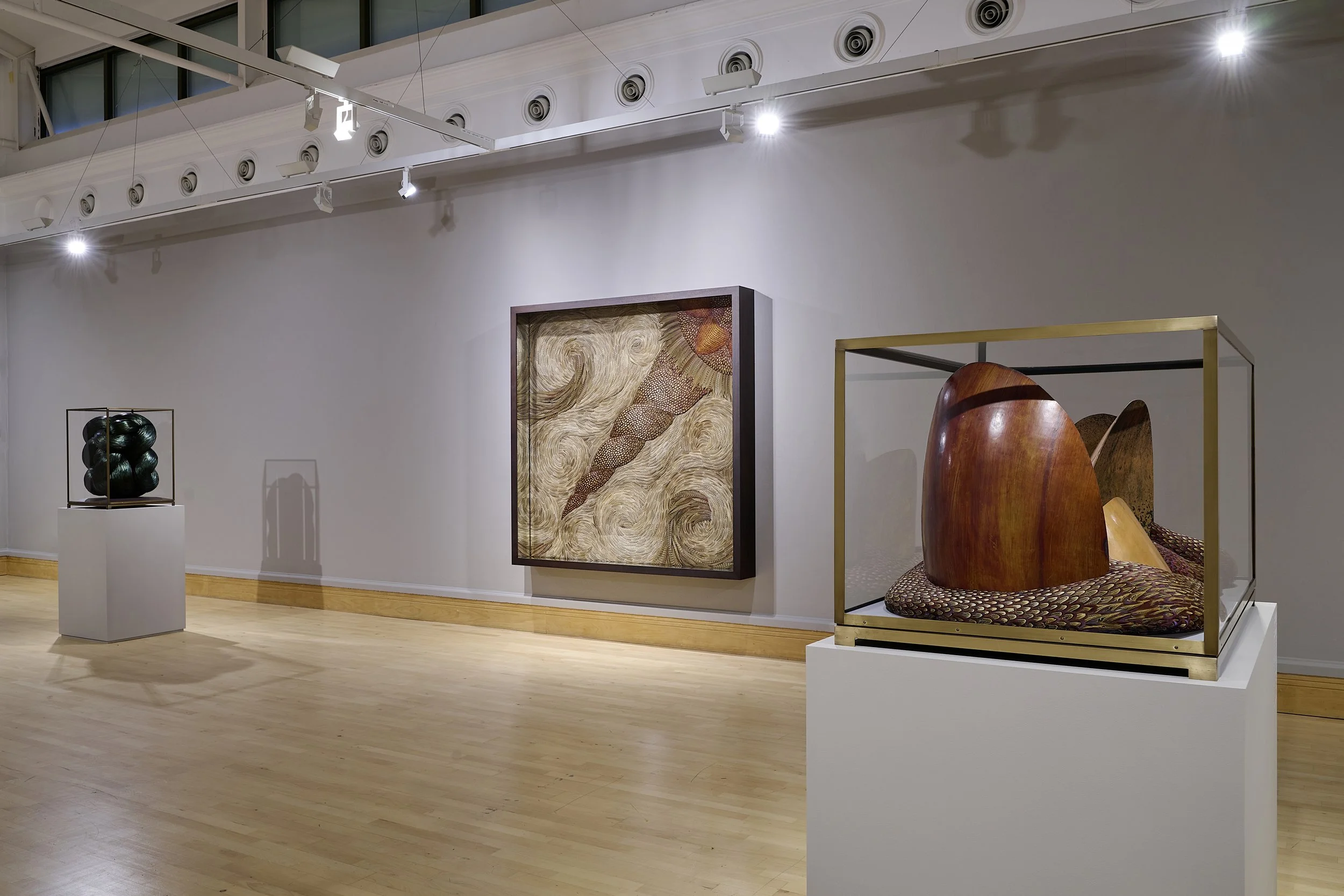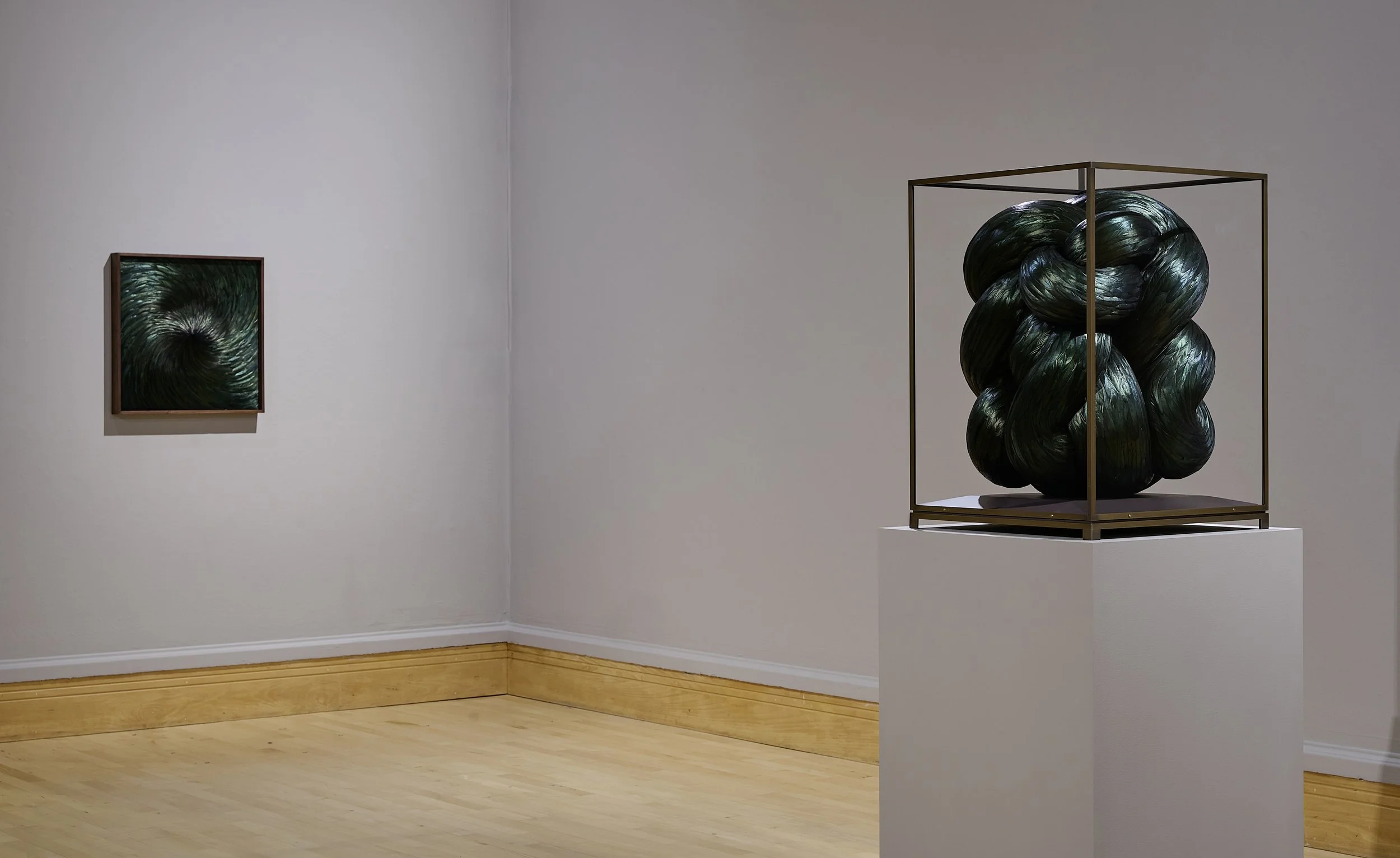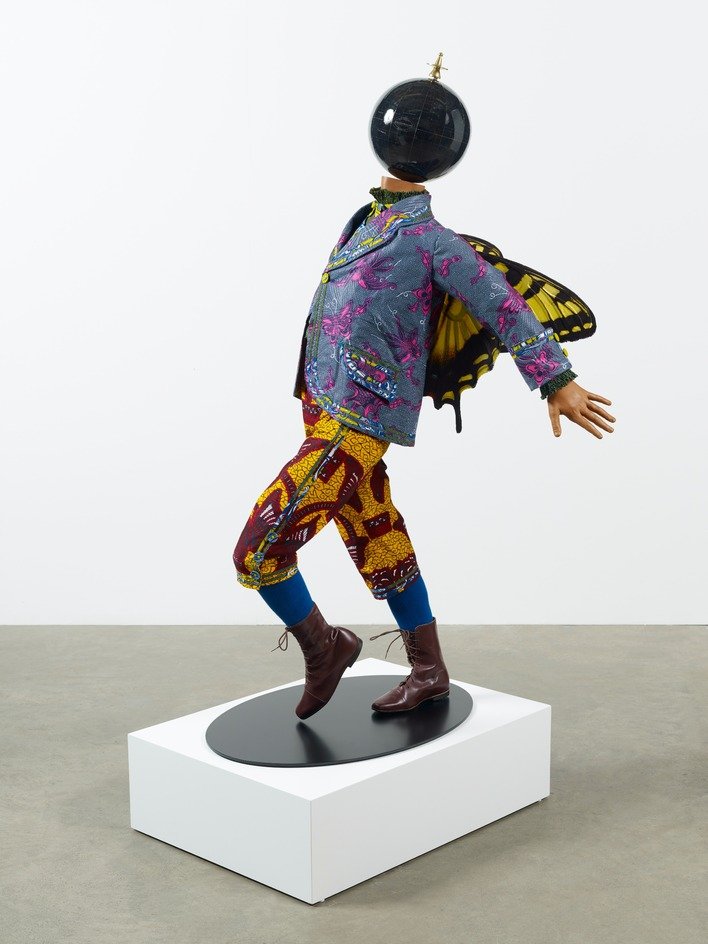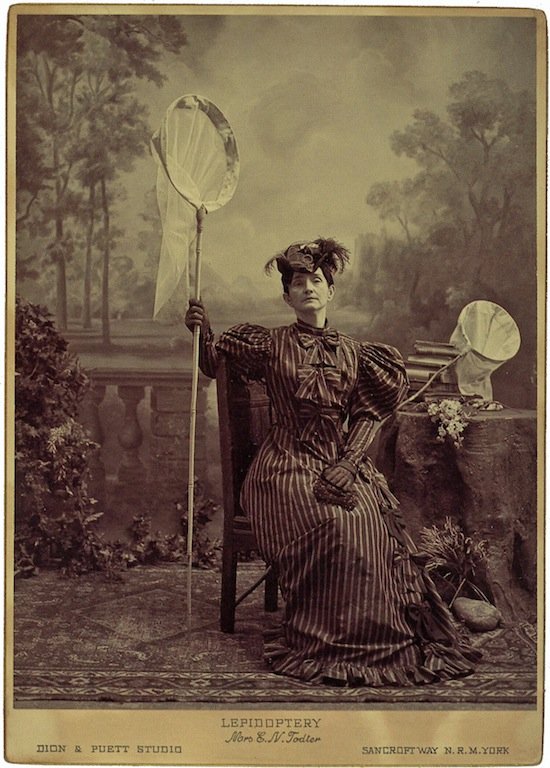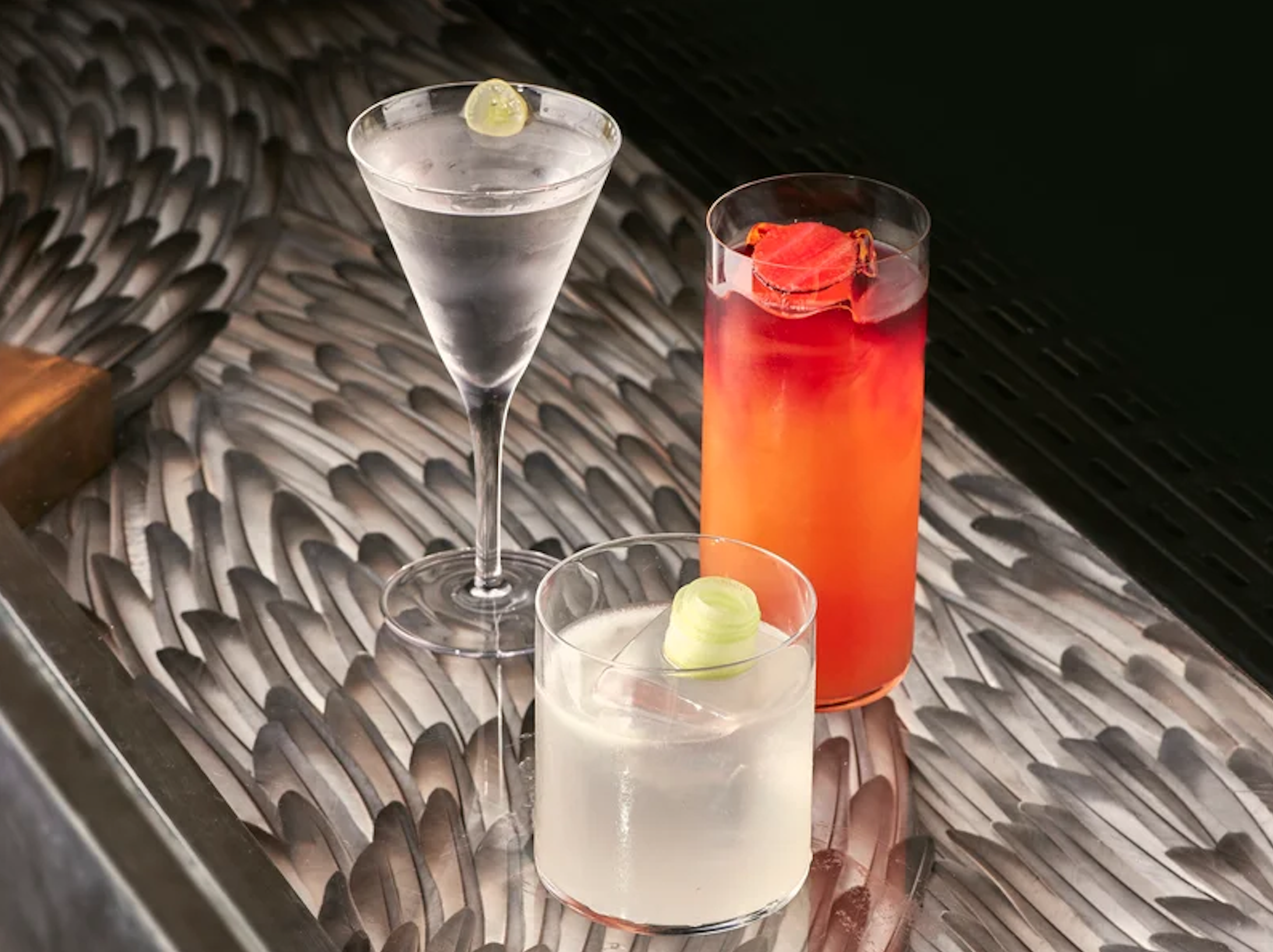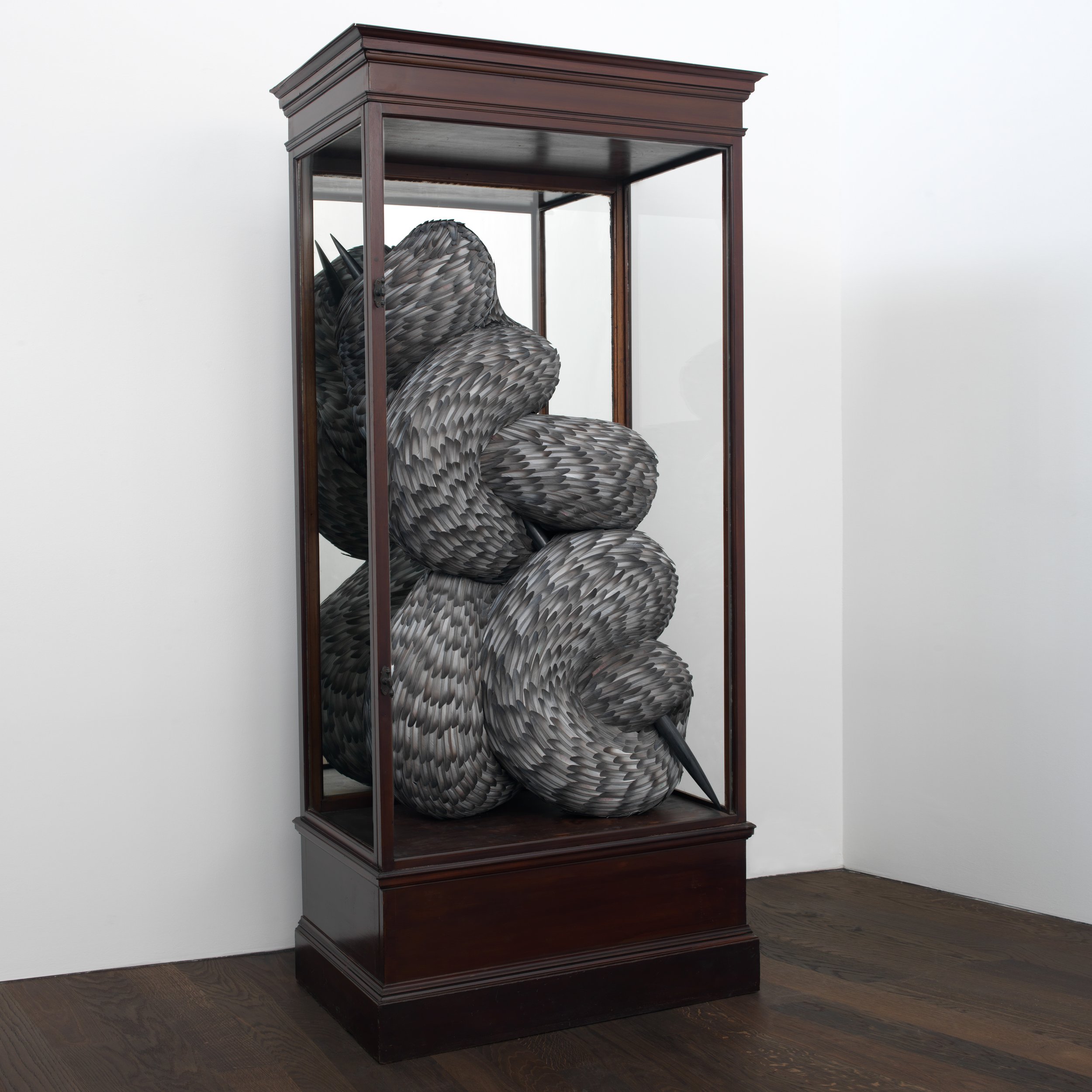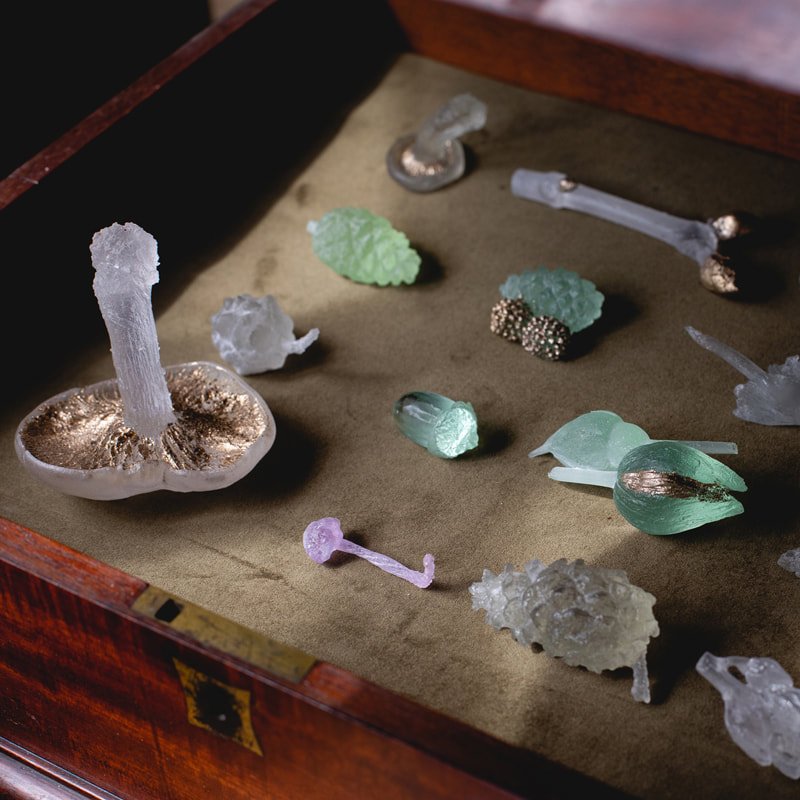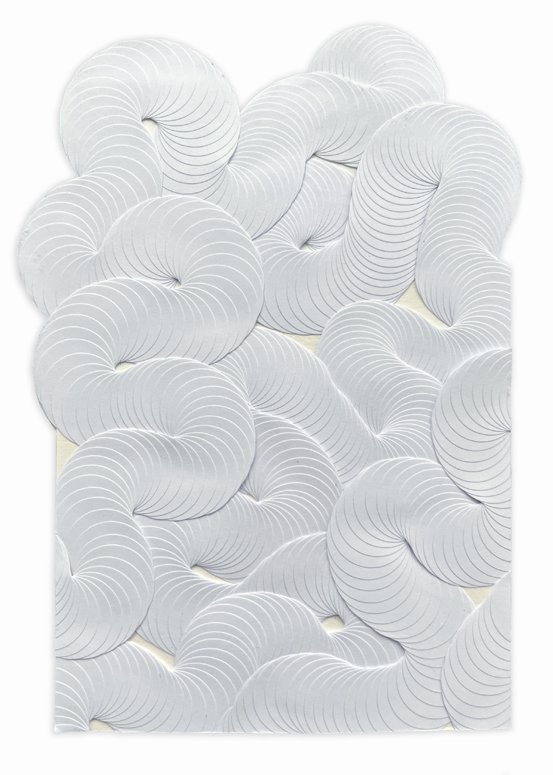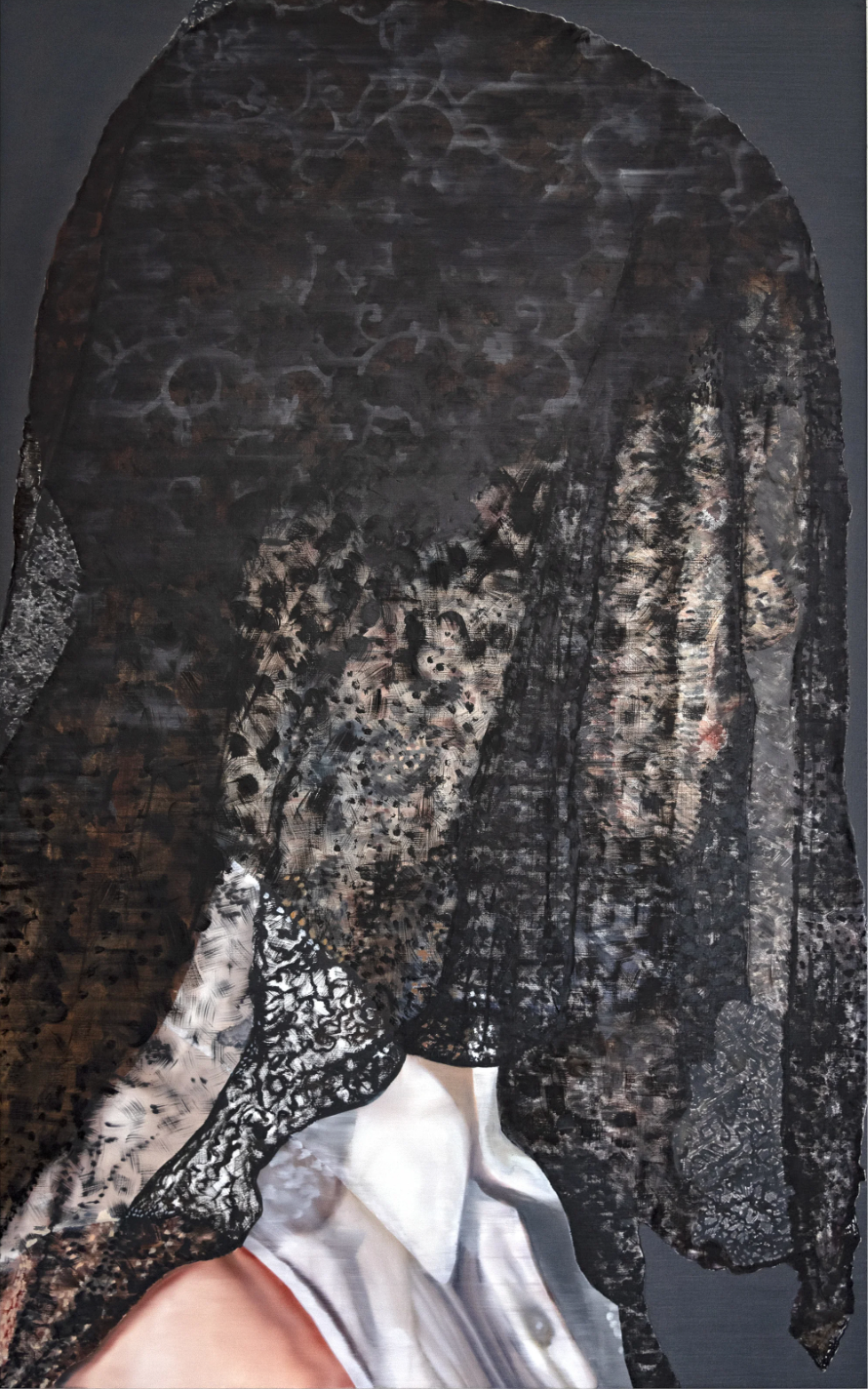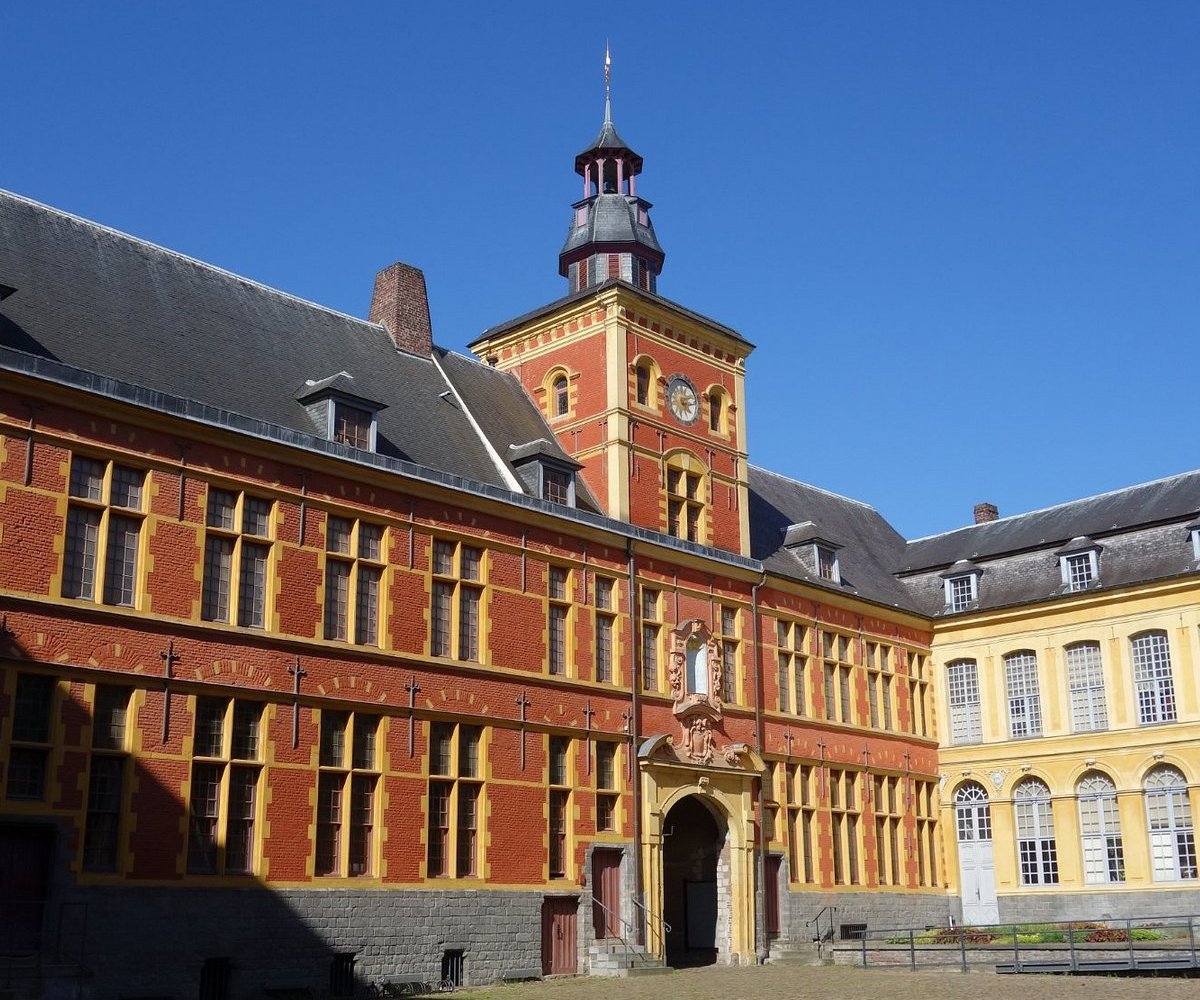EXHIBITION — QUIVER Solo show at Djanogly Gallery, University of Nottingham
Lakeside Arts is proud to present Quiver, a major solo exhibition by internationally renowned British artist Kate MccGwire, showing at the venue’s Djanogly Gallery this autumn. Known for her extraordinary sculptural works crafted from ethically sourced birds’ feathers, MccGwire’s unique practice explores powerful themes of duality, beauty, and the natural world.
The exhibition offers an ambitious survey of MccGwire’s work over the last 25 years, from gigantic installations to exquisitely detailed pieces. Visitors will experience the full scope of her sculptural mastery, including vast serpentine forms clad in crows’ feathers, pigeon feathers cascading from gallery walls, and precious works housed beneath antique glass domes. The latter being a nod to the mania for taxidermized animals in nineteenth-century museums and homes. A highlight of the show is Cavort (West), a striking mosaic of pheasant feathers created for the eighteenth-century interiors of Harewood House, Yorkshire, during the Covid-19 pandemic - seen at Lakeside Arts for the first time since its original installation…..
Neil Walker, curator at Djanogly Gallery, Lakeside Arts.
EXHIBITION: GLITCH
PINION, TORQUE and VETCH
GLITCH | Kate MccGwire
Galerie les Filles du Calvaire | 21 Rue Chapon, Paris
26 April - 21 June 2025
Kate MccGwire continues her exploration of the complexities and grotesque underbelly of beauty, where every attraction has its violent or dark opposite. Drawing you in with intricate patterning and seductive aesthetics of glistening feathers, much like a bird attracting a mate, MccGwire’s forms are both sinister and compelling, evoking a mixture of sexual attraction and fearful desire.
For twenty years it has been the ambivalent and discarded feathers, collected and sorted en masse, that have become the unlikely and ephemeral ‘raw’ material on which British artist/sculptor Kate MccGwire has worked her Ovidian transformations. It was as a child, in the mysterious winding waterways and natural history of the Norfolk Broads, that Kate MccGwire’s fascination with birds, wildlife and water began. A fascination that would become an enduring influence on her later practice.
MccGwire’s work has almost no sculptural antecedents — her biomorphic forms are constructed in a complex craft-based ritual. Working on her barge, she creates solid sculptural forms, painstakingly covered with selected feathers, attached one by one in a repetitive process, to almost mimic the close-packed arrangement of feathers on a wing or the scales of a fish or snake. Hairs, scales and feathers are related—all evolved from similar structures, for example bird’s feathers arose from dinosaur scales. MccGwire is aware of these evolutionary origins when she says, “I like the way birds link us with our ancient ancestors.”
Something mysterious happens in the series of transformations she works, from feathers on a bird, to feathers sorted in boxes, to feathers in the final works. Our feelings are caught by the seductive allure of the surface magic, yet there are also uncomfortable feelings that such un-natural objects engender, disquieting, half-mythical, half-sexual undercurrents.
Underlying forms oscillate between figurative allusion and a more fluid resonance. There is a sense of musculature beneath the concealing feathered carapace amplifying that key element of ambiguity that is reflected in multiple strands of her work. Notable among these are the confined, constrained constructions, usually within cabinets or domes, that project a rampant sensuality and naked eroticism.
Visceral, oily, sinister and compelling coils elicit in us a mix of sexual attraction and fearful desire. The sheen, the iridescence, the subtle colour shifts, all contribute to the way we see these shifting, unruly forms that yet, on occasion, can still appear calm and still. She says, “I’m exploring that fine line, not wanting to disgust or shock, but rather subtly to unsettle the viewer in some way.”
Integral to the confined works, their enclosures do two things. First, they prevent us from touching, from engaging — feathers and fingers forever forbidden. MccGwire explains, “It’s about mystery. They’re often behind glass so that no one can ever touch them and find out what they’re like. They ought not to be touched. That’s part of the work for me.” And second, the vitrines are disturbingly small — the work within is tight and breathless, unambiguously dead.
Arranged in waves and torrents, some works remind us of the hidden power of the sea, its whirlpools and maelstroms. MccGwire alludes to this, “They’ll see the beauty and rhythmic energy of the feathers’ patterning, almost like the surface of the sea, but also be aware of a sense of turbulence beneath”.
- Keith Roberts
GLITCH: Kate MccGwire
Galerie les Filles du Calvaire | 21 Rue Chapon, Paris
26 April - 21 June 2025
EXHIBITION: IGNITE THE SENSES, MEDBODRUM
IGNITE THE SENSES | HOTEL MAÇAKIZI
10 - 12 May 2024
Introducing MedBodrum, this vibrant festival at Hotel Maçakizi is a celebration of art, music, and food unlike any other. I am thrilled that two of my works, THROB and GYRUS, are included in the 'Ignite the Senses' exhibition, which is part of the festival taking place this weekend in the picturesque landscapes of Turkey.
GYRYS, 2019. Mixed media with pheasant feathers
Curated by Fru Tholstrup and Jane Neal, 'Ignite the Senses' brings together a diverse array of artists, each contributing their unique perspective to this immersive experience. Among the array of fantastic artists are Marina Abramović, Helen Beard, Jake Chapman, Charlotte Colbert, Antony Gormley and many more!
As you wander through the space, there’s a vast array of artistic expression. From Abramović's thought-provoking pieces to Beard's vibrant canvases, each piece invites viewers to take a closer look and gives a totally different side to the usual experience of staying at the hotel. But the appeal of MedBodrum extends beyond the art. Throughout the festival, guests are also treated to performances by incredible musicians and culinary delights from world-leading chefs.
MedBodrum is a feast for the senses in every sense of the word. From the beautifully curated art to the wonderful performances and mouthwatering cuisine, every aspect of MedBodrum invites visitors to immerse themselves fully in the magic of the moment. A huge congrats to Jane and Fru for putting on such a fantastic event!
IGNITE THE SENSES, MEDBODRUM
Hotel Maçakiz | Bodrum, Turkey
10 - 12 May 2024
EXHIBITION: SEEING RED
SEEING RED | PHILLIPS
16 - 24 March 2024
I am thrilled to share that new works FLICK, SLY, WHIP and SIMMER will be included in the upcoming exhibition SEEING RED, presented by PhillipsX. This exhibition, curated by Jane Neal and Fru Tholstrup, celebrates the diverse interpretations of the colour red by established and emerging artists alike.
SEEING RED offers an immersive experience, inviting visitors to reflect on the profound significance of this bold and evocative hue. From its cultural symbolism to its emotive power, the colour red has played a significant role throughout history, symbolising luck, joy, passion, danger, and love. It is a colour deeply rooted in spiritual rituals and adorned in art, carrying rich cultural and emotional importance.
I am particularly excited to explore the theme of 'Seeing Red' by incorporating forged metal and hand-sititched leather into my work, something I’ve been interested in doing for a long time. This opportunity allowed me to venture out of my studio and into the forge, where I was inspired to merge the rich red leather, dyed and hand-stitched using traditional techniques, with forged iron.
The exhibition will feature over 70 works by 40 esteemed artists, each contributing their unique perspective on 'Seeing Red'. Join me and a remarkable line up of artists including Marina Abramović, Charlotte Colbert, Maryam Eisler, Laura Ford, Carolina Mazzolari, Justin Mortimer and many more, as we celebrate the complexities of SEEING RED at Phillips London.
SEEING RED
Phillips | London
16 - 24 March 2024
EXHIBITION: IRIS VAN HERPEN. SCULPTING THE SENSES
IRIS VAN HERPEN. SCULPTING THE SENSES | MUSÉE DES ARTS DÉCORATIFS
29 November 2023 - 28 April 2024
This winter Iris Van Herpen is set to take centre stage at the Musée des Arts Décoratifs in Paris, the vast retrospective show will run from 29th November to 28th April and promises to be nothing short of exceptional. At ‘Sculpting the Senses’ you'll have the chance to immerse yourself in Iris Van Herpen's captivating world. With a curated collection of more than 140 Haute Couture designs and accessories being shown alongside contemporary works from other artists, this exhibition will take you on a journey through eight major themes, offering a profound insight into van Herpen’s creative process. As an artist honoured to be part of this show I can't help but express my excitement for this extraordinary upcoming exhibition.
The Musée des Arts Décoratifs has a rich history of celebrating innovation and creativity in the world of art and design, and Iris Van Herpen's retrospective is no exception. The Dutch designer, renowned for her sculptural and futuristic collections, has pushed the boundaries of fashion with her unique vision.
Included in this wonderful retrospective is a new cabinet piece 'INVEIGLE' (2023), this is the first time that this new pheasant feather work will be shown and I can’t think of a more perfect setting. Van Herpen’s exploration of the body's place in space, its relationship to clothing, and its environment is a theme that resonates deeply with my own work.
‘Sculpting the Senses’ is a testament to the power of art to challenge perspectives and inspire innovation. In a world that's evolving rapidly, van Herpen’s visionary perspective offers us a glimpse into the future of fashion and design. See you at the Musée des Arts Décoratifs where this exhibition is bound to leave a lasting impression.
IRIS VAN HERPEN. SCULPTING THE SENSES
Musée des Arts Décoratifs | Paris
29 November 2023 - 28 April 2024
EXHIBITION: REIMAG(IN)ING THE VICTORIANS
REIMAG(IN)ING THE VICTORIANS | DJANOGLY GALLERY
23 September 2023 - 7 January 2024
I am thrilled to share with you that GYRUS (2019) is included in an exciting exhibition that is currently gracing the Djanogly Gallery at Lakeside Arts, Nottingham. "REIMAG(IN)ING THE VICTORIANS" is a fascinating group show, curated by Dr Isobel Elstob, that delves deep into the realms of creativity, history, and the art of reimagining the past.
This exhibition, running from September 23rd to January 7th, brings together a diverse array of artists, each with their own distinctive vision and perspective. Through the works of artists such as Yinka Shonibare, Sally Mann, Mark Dion, Ingrid Pollard, Polly Morgan, and Tessa Farmer, along with the historical context provided by Victorian taxidermy and images by 19th-century luminaries like John James Audubon and Julia Margaret Cameron, the exhibition offers a thought-provoking glimpse into the past while firmly grounding it in the present.
Butterfly kid (Boy) II (2015) Yinka Shonibare RA
"REIMAG(IN)ING THE VICTORIANS" encourages us to ask questions about the legacy of the 19th century and its continuing impact on our lives. It challenges us to think critically, appreciate the beauty of the past, and acknowledge the complexities that come with it. It is an exhibition that fosters dialogue and introspection, inviting us to engage with history through the eyes of contemporary artists.
Mrs E.N. Todter, Lepidoptery (1998) Mark Dion & J. Morgan Puett
Don't miss this incredible opportunity to be a part of a journey through time and art. This is one for art lovers, history enthusiasts, and curious minds. Explore the vivid tapestry of ideas, emotions, and perspectives that "REIMAG(IN)ING THE VICTORIANS" has to offer.
REIMAG(IN)ING THE VICTORIANS
Djanogly Gallery | Nottingham
23 September 2023 - 7 January 2024
OPENING: 1 HOTEL MAYFAIR
Thrilled to announce the installation of TORRENT (2023) at the Dover Yard bar located in the fabulous 1 Hotel Mayfair. This new piece is a celebration of nature's untamed beauty and the boundless power of water.
The feathers used to make up this piece come from racing pigeons up and down the UK. Over the years I’ve built up a network of pigeon fanciers who send me their birds’ molted feathers twice a year. The materials have a miraculous quality about them; you can’t buy them, as is the case with conventional artist’s materials. Inspired by the untamed energy of rushing water, TORRENT encapsulates the power of nature.
Dover Yard bar, nestled within the stunning 1 Hotel Mayfair, provides the perfect backdrop for TORRENT. The seamless blend of nature-inspired design and contemporary elegance creates a lovely ambiance that is ideal for sipping cocktails and musing over the secret messages hidden in TORRENT’s feathers.
TORRENT at Dover Yard, 1 Hotel Mayfair photo by Jon Day
A huge thank you to the team at Art Source London and 1 Hotel Mayfair for their support and commitment to fostering a space where art and nature meet. If you find yourself in the heart of Mayfair, don't miss the opportunity to take a look.
Dover Yard
1 Hotel Mayfair | London
TORRENT at Dover Yard, 1 Hotel Mayfair photo by Jon Day
EXHIBITION: WONDROUS WORLDS
WONDROUS WORLDS | THE MUSEUM IM KLEIHUES-BAU
13 May - 24 September 2023
Step into a realm where reality blurs with illusion, and the natural converges with the absurd. Recently unveiled at The Museum im Kleihues-Bau a trio of sculptures, PLIGHT, PERIHELION, and SNEER, that haven’t been shown together since my 2015 solo show in Berlin.
Made using a selection of rooster, pheasant, and pigeon feathers, these sculptures now find themselves on display at The Museum im Kleihues-Bau in the enchanting city of Kornwestheim, Germany. Prepare to be captivated as this remarkable exhibition immerses you into the private collection of Anna and Michael Haas, who have curated a wondrous world that transcends the boundaries of reality.
SNEER (2014) Kate MccGwire
This exhibition transports us to a realm where the natural merges with the absurd and the fantastic. It is here that beauty intertwines with the ominous, and reality takes on the guise of illusion. The intricate interplay of materials, textures, and forms, challenges your perceptions and invites you to question the very nature of what we consider real.
WONDROUS WORLDS
The Museum im Kleihues-Bau | Germany
13 May - 24 September 2023
EXHIBITION: UNCOMMON BEAUTY
UNCOMMON BEAUTY | MAKERS GUILD WALES
1 April - 29 May 2023
If you’re in Cardiff over the next couple of months be sure to make a visit to the Makers Guild Wales, where I AM LOST is included in a new group show that presents a range of unique and thought-provoking pieces.
The exhibition is a treasure trove of exquisite works which play with the idea of natural history artifacts, wunderkammer collections, the macro and micro. A collection of beautifully made objects, intriguing textures, materials and unusual forms; blurring lines between the real and the imagined; inviting the viewer to look closely, to question.
Artists: Kate Bajic, Jane Bevan, Kirsti Brown, Effie Burns, Rima Day, Clarrie Flavell, Anne Gibbs, Jude Gill, Andrea Haffner, Laura Hart, Joe Hogan, Ikuko Iwanmoto, Monette Larsen, Kate MccGwire, Molly Macleod, Junko Mori, Verity Pulford, Romilly Saumarez Smith, Andrea Spencer, Emily Stubbs, Nancy Sutcliffe, Louis Thompson & Pratibha Mistry, Annette Marie Townsend, Emma Witter, Louise Ann Wright, Anastassia Zamaraeva
UNCOMMON BEAUTY
Makers Guild Wales | Cardiff
1 April - 29 May 2023
Kate MccGwire
CHARITY AUCTION: ART ON A POSTCARD, INTERNATIONAL WOMEN'S DAY 2023
Art on a Postcard is currently hosting its fourth International Women’s Day Auction, with an entirely new format for 2023. AOAP have invited seven female curators to each curate a mini auction. Each show is running as seven concurrent auctions, all of which are raising money to support The Hepatitis C Trust’s work with women affected by the criminal justice system both in prison and local communities.
You can find two of my pieces, CLUSTER and CLUSTER INK, in the auction that has been curated by freelance curator and creative producer Bakul Patki.
Arts and culture curator and producer Bakul Patki’s collection also features work from Nina Mae Fowler who is known for her highly detailed, large-scale drawings and installations, Australian artist Jasmine Manbridge who works in sculpture, large-scale public works and intimate paintings for private collections, and French filmmaker and visual artist Cécile Davidovici, who creates tactile works with thread.
Bidding starts at £50 and with over 150 artworks to choose from there is something for everyone!
Art on a Postcard, International Women’s Day Charity Auction
23 February - 9 March 2023
OPENING: GALERIE LES FILLES DU CALVAIRE
Since 2019 I have been represented in Paris by Galerie Les filles du calvaire, the gallery has always been a place of art and creativity in the heart of Paris. And now, in an exciting next step the gallery is about to become even bigger and better as they open their second space on rue Chapon.
Founded in 1996, Galerie Les filles du calvaire has established itself as a leading contemporary art gallery, representing a diverse range of established and emerging artists. With its new location the gallery will be able to showcase an even greater variety of contemporary art, cementing its place as one of the foremost cultural institutions in Paris.
For their inaugural exhibition the gallery presents Persona, a group show spread over 300m2 of this new space. The diversity of the works displayed reflects the sensitivity of the gallery, its affections and its curiosity. Persona gathers artists whose energy animates the contemporary visual arts scene and works that share themes of figuration and representation.
The opening of this second space is a major milestone and represents a new chapter in the gallery's ongoing commitment to supporting and promoting contemporary art. I can’t wait to return to Galerie Les filles du calvaire for a solo show in 2024 when I will be showing work in their new space for the first time… watch this space!
Persona
Galerie Les filles du calvaire, 21 rue Chapon | Paris
4 February - 1 April 2023
EXHIBITION: CURE³
I am delighted to be participating and contributing 'PULSING' 2023 (mixed media with pheasant feathers) to CURE³ curated by Artwise Curators and raising funds for the charity Cure Parkinsons with an exhibition in partnership with Bonhams.
Sales will be open for a Premium Access Event on Tuesday 10 January - 10:00-18:00 on www.cure3.co.uk
Private View (invitation only) Thursday 12 January - 18:00 - 20:00h at Bonhams
Exhibition open to public at Bonhams:
Friday 13th January 09:00-17:00
Saturday 14th January 11:00-15:00
Sunday 15th January 11:00-15:00
Monday 16th January 09:00-17:00
Tuesday 17th January 09:00-17:00
CURE³ is a free event and is open to the public - locations: Bonhams, 101 New Bond Street, LondonW1S 1SR and online at www.cure3.co.uk.
Do you know anyone with Parkinson's Disease? Most people do, and it is not surprising when you look at the statistics: there are an estimated 10 million people living with Parkinson's Disease worldwide and in the UK around 1 in 500 are diagnosed with this cruel degenerative neurological disease - that currently has no cure.
As a call to action, art and science unite with CURE³ (Cure Cubed) the acclaimed contemporary art fundraising exhibition, established in 2017 and now in its fourth edition, devised and curated by Artwise in partnership with Bonhams to raise awareness and funds for Cure Parkinson's.
The unique concept for CURE³ centers around each artist being given a bespoke Perspex cube measuring just 20cm3 as a compact space to interact with in any way to create original artworks on or within. The resultant highly sought-after and collectable artworks are exhibited at Bonhams and sold online.
Cure Parkinson's is an inspirational and dynamic charity with a major goal to find a cure for Parkinson's Disease. To date, thanks to the generosity of all the contributing artists, CURE³ has raised over 1 million pounds fo Cure Parkinson's, to fund research to slow, stop and ultimately reverse disruption. It is predicted that 1 person in 37 will receive a diagnosis of Parkinson's in their lifetime.
CURE³ 2023
Bonhams | London
13 - 17 January 2023
EXHIBITION: LE SERPENT COSMIQUE, LILLE3000 2022
In 2004, Lille became the European Capital of Culture. Since 2006, lille3000 has continued the work that began in 2004 with its major thematic editions. This extraordinary event had a lasting impact on the city, the region, and its cultural dynamism. The new edition of lille3000, Utopia, runs until 2 October and I'm delighted that PARADOX (2019) has been included in the exhibition “Le Serpent Cosmique” at the beautiful and fascinating Musée de l'Hospice Comtesse.
Strolling down the quiet cobbled rue de la Monnaie, you would have no idea what lies behind the grand wooden doors of Musée de l'Hospice Comtesse. Set into a long wall dotted with arched windows and doorways, the museum entrance opens up to reveal a series of buildings and courtyards and a truly fascinating visit.
In dialogue with the museum's collections, “Le Serpent Cosmique” explores how artists are inspired and nourished by nature and life to create utopias. A true immersive and sensory experience to explore our place in the world differently and awaken the deep bond that unites us with nature, especially through ancestral rites and practises such as shamanism.
LE SERPENT COSMIQUE, LILLE3000 2022
Musée de l'Hospice Comtesse | Lille
14 May - 2 October 2022
TALK: UNDERTOW, Paris
This Saturday, Galerie Les Filles du Calvaire is pleased to host a guided tour by Kate MccGwire of her exhibition UNDERTOW. The event will be in English, and cover Kate’s work and inspirations for the exhibition.
Click here for more information on the exhibition.
To RSVP on Facebook please click here.
Saturday, 9 April 2022 from 15:00-16:30
Galerie Les Filles du Calvaire 17 Rue des Filles du Calvaire, 75003 Paris, France
TALK: Marvellous Menagerie
Kate MccGwire is joined by Catriona McAra to explore the themes of the feminine grotesque that have come to characterize MccGwire's work.
Dr Catriona McAra & Kate MccGwire
An in-conversation celebrating a major new monograph on the mesmerizing sculptures of English artist Kate MccGwire! She is joined by essayist Catriona McAra to explore the themes of the feminine grotesque that have come to characterize MccGwire’s work. McAra will trace over two decades of MccGwire’s career as it segues through the lessons of soft sculpture, surrealism and postminimalism, drawing from the likes of Eva Hesse, Louise Bourgeois, Dorothea Tanning towards the raw animal masses of Berlinde De Bruyckere and others.
Kate MccGwire is an internationally recognized sculptor known for her distinctive aesthetic formula and innovative use of feathers. The feminine grotesque and the uncanny have sustained a significant hold over MccGwire’s creative imagination over the last twenty years, with interlocking thought-forms and otherworldly beings dominating her oeuvre. Her muscular, epic, knot-like artworks exploit dichotomous feelings of revulsion and desire, troubling boundaries of the wild and the civilized.
Dr Catriona McAra is Assistant Director, Heritage Collections and Curation at the University of St Andrews. She is a specialist in modern and contemporary art history with particular interests in feminist-surrealist legacies. Her forthcoming books include Ilana Halperin: Felt Events (MIT and Strange Attractor, 2021) and The Medium of Leonora Carrington (Manchester University Press, 2022). Recent writing on MccGwire includes ‘Boundary Creatures’ (Anomie, 2021) and ‘Menagerie’ (C8, 2020).
Kate MccGwire in Conversation | Zoom Lecture | 24 January 2022 | 8 - 9:30 pm.
The accompanying book is published by Anomie Publishing, edited by Mark Sanders. Designed and produced by Peter B. Willberg. It features essays by Catriona McAra and Jane Neal. Now available: Kate MccGwire | (anomie-publishing.com)
MONOGRAPH REVIEW: Julie de Libran
Julie de Libran is a Paris based fashion designer. Julie has been following my work for over a decade; in her review, Julie talks about the first impressions of my sculptures, their scale and relationship with the surroundings.
“I have been a great admirer of Kate‘s work since the first time in 2008 I came across it as part of an exhibition at MoMu Antwerp. Her sculpture GYRE took up the whole room with each feather delicately placed in a meticulous way, I was mesmirised by its extreme beauty, force and astonished by its size and form.
I love the way Kate has photographed her work throughout the years in unique environments. Each setting contrasting her work beautifully allowing the work to glow spectacularly from the image.
Congratulations on this beautiful book, keep on inspiring us, Kate...”
MONOGRAPH REVIEW: Clare Lilley
Clare Lilley is a curator and director of programme at Yorkshire Sculpture Park. In her review, Clare shared her impressions of the monograph and my career so far.
”I thought I knew Kate MccGwire’s work well, but to see it unfolding here in such stunning photographs is so powerful and an absolute inspiration. The texts are superb. It is a beautiful publication that represents an exceptional career.”
MONOGRAPH REVIEW: Keith Roberts
Keith Roberts is a scientist, writer and curator. In these selected excerpts from his insightful review of the monograph, Keith examines ambiguity and eroticism in my work.
“The work is darkly and genuinely sensational.”
“<The works> are ambiguous <in their sexuality>. Feathers are used by male birds to seduce, and although many works have female attributes, they are <often> far tougher, more androgynous, far more aggressive, far more thrusting, and sometimes definitely far more ‘male’.”
“Works like Cleave and Pelt seem to invoke the mythical vagina dentata, threatening castration, but at the same time seductive and luring. ‘Cleave’ is one of only a handful of words in the English language that have two diametrically opposing meanings, to cling to as one, or to split asunder, as ambiguous and alluring as the works themselves. Love and hate, sex and death – enter triumphant and exit diminished! I used to quite like Koestler’s explanation of creativity (and jokes) as often arising when one matrix of knowledge or expectation is mixed unexpectedly with another, and I find much of that is true in many of <MccGwire's> works.”
“There are two clear kinds of works in the book, that reflect the ambiguity throughout the works. On the one hand are the confined, constrained, corseted constructions, usually constricted within anaerobic cabinets or domes. And on the other are the emetic fluid eruptions, emerging energetically from erotic environmental orifices of various descriptions. The latter works reflect on the open idea of liquid as an erotic or maternal medium — secretion, ejaculation, lactation or amniotic fluid, while the former reflect on more closed ideas of transgressive constraint, repression and captivity.”
MONOGRAPH REVIEW: Rowena Chiu
Rowena Chiu is a London based independent curator. In her reflective review, Rowena summarised my enthralment with dualities of nature, and how this is represented through illustrations and essays in the monograph.
“Seeing the experimentation and development of Kate MccGwire’s oeuvre over twenty years compiled into this richly-illustrated monograph underscores the artist’s enthralment with nature and inherent respect for the majesty and dimensionality of both her material and its origins.”
"The vivid images in the monograph impress upon the iridescence and hypnotic three-dimensionality of the material used by Kate MccGwire, which is emphasised by MccGwire’s adept manipulation of it."
"The essays in Kate MccGwire’s monograph rightly situate her work on the boundaries of classical mythology, surrealism, post-minimalism, feminist art and soft sculpture, yet it is apparent that the work in its slippage has shaped a distinctive practice in which these art historical references fuse with MccGwire’s visceral appreciation of the magnificence and dualities of nature."
